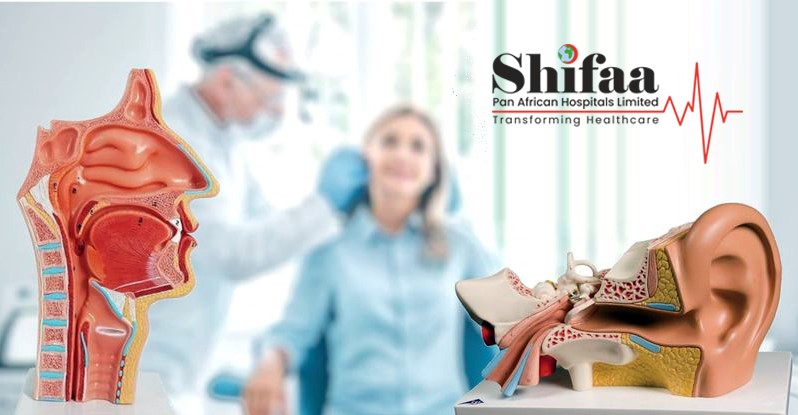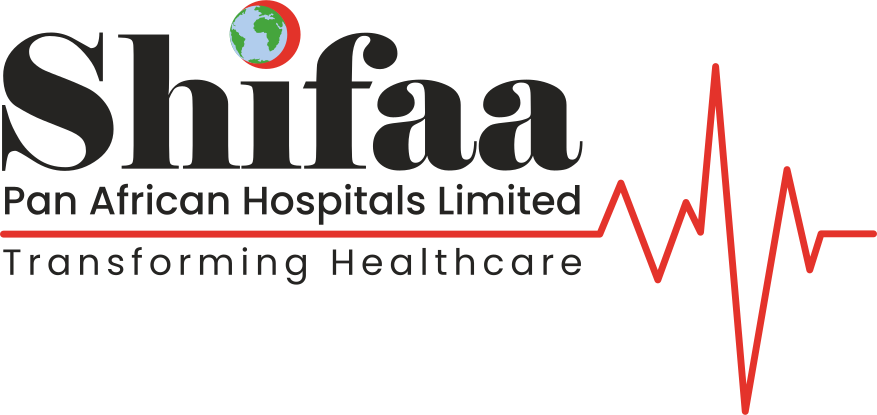
Septoplasty (Deviated Septum Correction)
At SHIFAA PAN African Hospital, our team of ENT specialists offers septoplasty, a surgical procedure aimed at correcting a deviated septum. We specialize in providing comprehensive care to patients experiencing nasal obstruction or breathing difficulties due to a deviated septum, ensuring optimal outcomes and improved nasal function.
Procedure Overview:
- Septoplasty is a surgical procedure performed to straighten and reposition the nasal septum, the thin wall of cartilage and bone that divides the nasal cavity into two nostrils. During the procedure, the surgeon makes small incisions inside the nose to access the septum and reshape it to improve airflow and nasal breathing.
Indications for Surgery:
- Deviated Septum: A deviated septum occurs when the nasal septum is crooked or displaced, leading to nasal obstruction, difficulty breathing through the nose, and other symptoms such as nasal congestion, frequent nosebleeds, and sinus infections. Septoplasty may be recommended to alleviate these symptoms and improve nasal airflow.
Surgical Technique:
- Septoplasty is typically performed under general anesthesia or local anesthesia with sedation, depending on the patient’s preference and the complexity of the procedure. The surgeon begins by making incisions inside the nostrils to access the septum.
- The deviated portions of the septum are carefully straightened, trimmed, or repositioned to create a more open nasal passage. In some cases, cartilage grafts may be used to support and stabilize the septum.
- Once the necessary adjustments are made, the incisions are closed with dissolvable sutures, and nasal packing or splints may be placed inside the nose to support the septum during the initial healing period.
Recovery and Postoperative Care:
- After septoplasty, patients can expect mild discomfort, swelling, and nasal congestion for the first few days. Pain medications and nasal saline irrigations may be prescribed to alleviate symptoms and promote healing.
- It is essential to avoid strenuous activities, nose blowing, or heavy lifting during the initial recovery period to prevent strain on the nose. Patients should also refrain from smoking and exposure to secondhand smoke, as it can delay healing and increase the risk of complications.
- Follow-up appointments will be scheduled to monitor healing progress and remove any nasal packing or splints. Most patients can return to work or school within a week to 10 days, although full recovery may take several weeks.
Potential Risks and Complications:
- While septoplasty is generally safe and effective, complications may include bleeding, infection, nasal septal perforation, changes in nasal sensation, or recurrence of nasal obstruction. These risks are rare and can be minimized by choosing an experienced ENT surgeon and following postoperative instructions diligently.
What is septoplasty, and who may benefit from this procedure?
Septoplasty is a surgical procedure performed to correct a deviated septum, which can cause nasal obstruction and breathing difficulties. Patients experiencing symptoms such as nasal congestion, difficulty breathing through the nose, or frequent nosebleeds may benefit from septoplasty.
Is septoplasty performed under general anesthesia?
Septoplasty can be performed under general anesthesia or local anesthesia with sedation, depending on the patient’s preference and the complexity of the procedure. Your ENT surgeon will discuss anesthesia options with you before surgery.
What can I expect during the recovery period after septoplasty?
Recovery from septoplasty involves managing mild discomfort, swelling, and nasal congestion for the first few days. Pain medications and nasal saline irrigations may be prescribed to alleviate symptoms. Most patients can resume normal activities within a week to 10 days.
Will I need nasal packing after septoplasty?
Nasal packing or splints may be placed inside the nose during septoplasty to support the septum during the initial healing period. Your surgeon will remove the packing or splints during a follow-up appointment once the nasal tissues have healed sufficiently.
Are there any long-term effects of septoplasty?
Septoplasty is generally safe and effective for correcting a deviated septum and improving nasal airflow. Most patients experience long-lasting relief from symptoms such as nasal congestion, difficulty breathing through the nose, and recurrent sinus infections.
How soon can I expect to see results after septoplasty?
While some improvement in nasal breathing may be noticeable immediately after septoplasty, full results may take several weeks as swelling subsides and the nasal tissues heal. Your ENT surgeon will monitor your progress and address any concerns during follow-up appointments.
At SHIFAA PAN African Hospital, our ENT specialists are committed to providing personalized care and treatment options for patients with nasal and sinus conditions. If you are experiencing symptoms of a deviated septum or nasal obstruction, we encourage you to schedule a consultation with our experienced team to explore your treatment options, including septoplasty.
ENT Procedures
- Allergy Management
- Antibiotic Therapy
- Audiometry (Hearing Tests)
- Cochlear Implantation
- Ear Tube Placement (Myringotomy)
- Facial Plastic Surgery
- Head and Neck Cancer Surgery
- Laryngectomy
- Laryngoscopy
- Myringotomy (Ear Tube Placement)
- Nasal Endoscopy
- Otoplasty (Ear Pinning)
- Parotidectomy (Salivary Gland Surgery)
- Rhinoplasty
- Scar Revision
- Sinus Surgery
- Speech Therapy for Speech and Swallowing Disorders
- Steroid Therapy
- Thyroidectomy
- Tonsillectomy and Adenoidectomy
- Tracheostomy
- Tympanometry
- Vestibular Nerve Section (for Vertigo)




